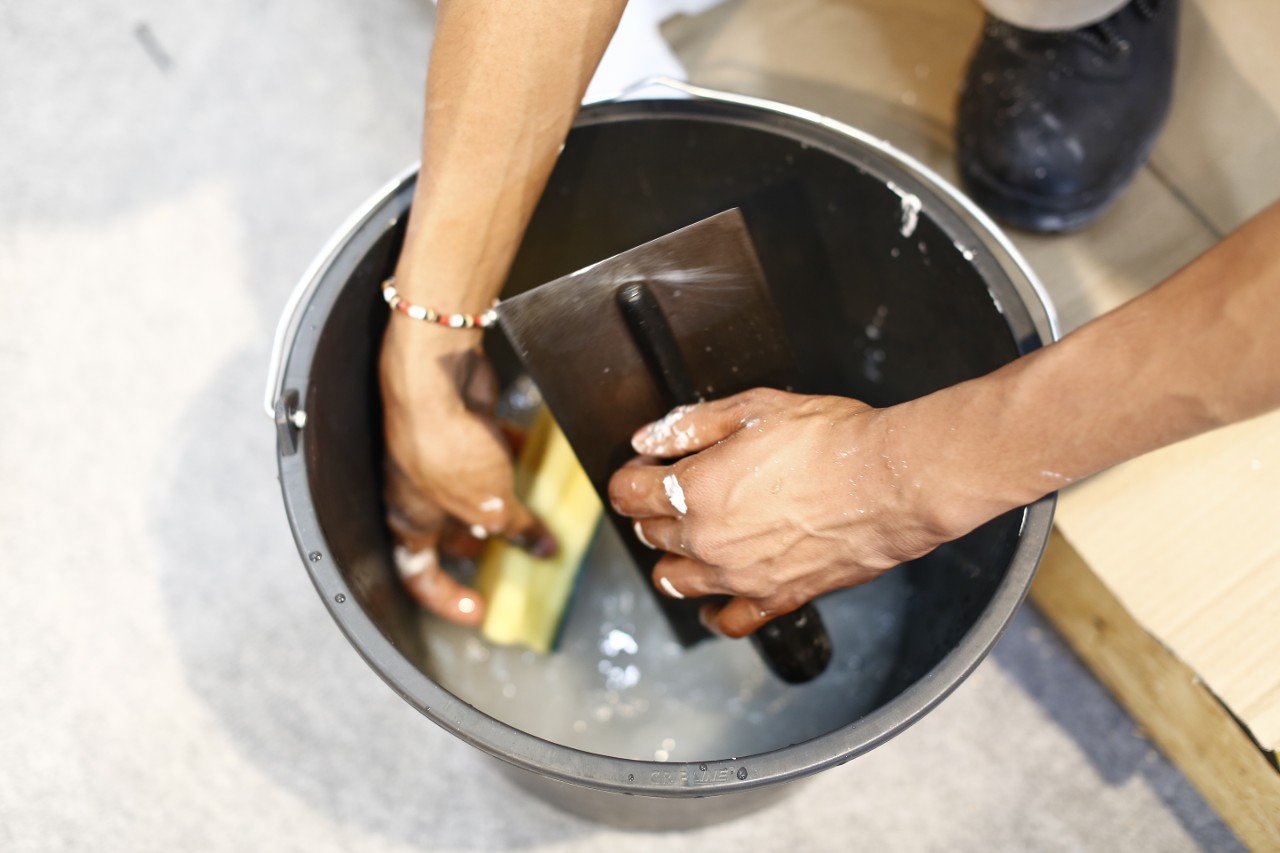Plastering and Drywall Systems 21
The skilled plasterer may work on both internal and external plastering and rendering work. Much modern internal work is completed using drywall systems which involve the plasterer creating metal frames and installing plasterboard before the application on the final surface. These constructions can be complex and include curves and openings for doors and windows. Traditional plastering involves the preparation of the background prior to application of the plaster surface. The plasterer will prepare materials for use and be fully aware of legislation and official guidance relating to the preparation and use of materials. In addition to plastering flat surfaces, the skilled plasterer will create and install decorative mouldings. Plasterers will also be required to make repairs.
The plasterer may work on large construction sites for domestic, commercial or industrial use, in single domestic and commercial premises or on historic buildings and heritage sites. Much plastering work on larger sites is sub-contracted and as such many skilled plasterers will be self-employed, meaning that they have to take responsibility for tax and other earnings related regulation.
A high degree of accuracy, care and skill is required. Preparation for plastering work will include complex mathematical calculations. The practitioner needs to be able to read, interpret and analyse complex specifications describing the work required and be able to convert these plans into reality.
A range of materials can be used depending on the site and the planned use of the finished building. Some materials can be harmful, so care must always be taken by the plasterer to prevent injury or damage in use or disposal of waste.
Plasterers often form part of a team, working efficiently and effectively with other skilled craftsmen in a logical and well planned manner.
Required skills
Dimensional accuracy, attention to detail, time management, ability to work to tight deadlines, good hand eye coordination, good work ethic, physical fitness.
Career info
Traditional plastering involves the careful preparation of an internal or external background for application or repair of a plaster surface. In addition to working with flat surfaces, the skilled plasterer will create and install decorative mouldings and details. Much modern internal work uses drywall systems involving the plasterer in creating complex metal frames and installing plasterboard before application on the final surface. Preparation for plastering work includes complex mathematical calculations; understanding specifications describing the work required; and being able to convert plans into reality with accuracy, care, attention to detail, and finished aesthetic.
The plasterer may work on projects of varying size and complexity, including single domestic or commercial premises, historic buildings and heritage sites. Much plastering work on larger sites is sub-contracted; so, self-employed plasterers will need knowledge and skills in business management, finance and regulations, and standards governing the profession.
Because of the various types of materials used in Plastering and Drywall Systems; the expert and environmentally aware plasterer will take care to prevent injury or damage in use or disposal of waste.
At the Competition
The Competitor is judged on:
- Interpretation of plans and drawings
- Construction of partitions and ceilings
- Insulation materials (thermal, acoustic, fire)
- Finishing of plasterboards (taping and coating)
- Plastering (mouldings and plaster coatings)
- Creation and decoration
- Working environment including safety, laws and hygiene

